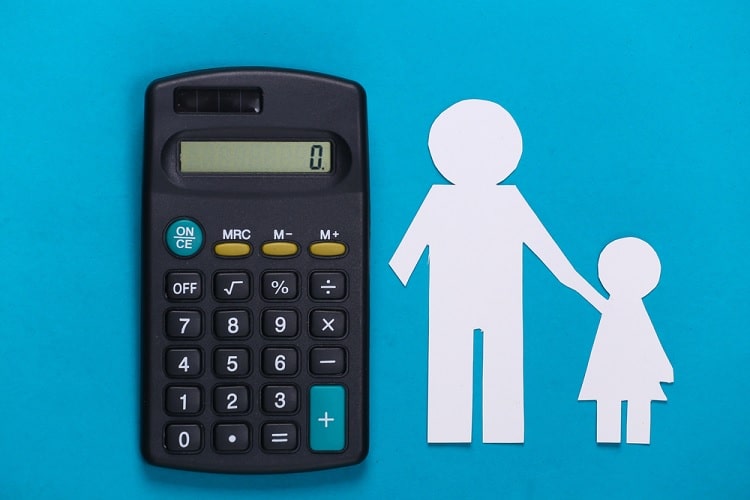Massachusetts Child Support Calculator (Ma)| Guidelines – 2024
Both parents are responsible for ensuring their child’s financial well-being in Massachusetts, and the amount is determined using the Massachusetts child support calculator. In most cases, however, only the non-custodial parent (who does not have primary physical care of the kid) pays child support.
The “custodial parent” is the parent who lives with the child and is responsible for their care. This parent is still liable for average child support, but the law expects that the custodial parent spends the required amount on the kid directly.

The amount of assistance is determined by criteria known as child support guidelines. Parents can agree to pay more than the recommended amount, but seldom less with court consent. In any situation, if a judge believes that it is in the child’s best interest, a court can vary from the standards and alter the amount of support up or down.
How to Calculate Child Support Payments in MA
Child support guidelines and procedures are available on the Massachusetts Courts website to assist you in using the Massachusetts child support calculator to calculate your fair share of child support. To calculate support, you’ll need to know both parents’ gross earnings. Gross income is defined as money collected from all sources for child support, including earnings, bonuses, salaries, dividends, royalties, pensions, military pay, disability, and social security income.
Child support is computed by summing the combined salaries of both parents and dividing the assistance proportionally between them. In other words, if the parents earn $6,000 and $4,000 per month, their respective proportionate support duties will be 60% and 40%.
Parents must also finance the expenditures of a child’s health insurance and schooling. If it’s in the child’s best interest and the parents can afford it, a court may order parents to divide the costs of extracurricular activities like summer camp or private school.
A court can impute (give) a larger income to one parent who is purposefully or willingly jobless or underemployed and reports a lower income than in the past. Simply put, if a parent does not work, they cannot avoid paying child support.
Guidelines For Child Support Payments in Massachusetts
Depending on how the parents split custody or parenting time, the standards utilize various formulas. There is a standard formula to calculate payments. However, it is based on the premise that the child lives with one parent for the majority of the time and with the other parent for around one-third of the time. If the non-residential parent has less than one-third of the parenting time, the court may raise the amount of support.
When the parents have nearly equal custody, and attendance time, each parent must fill out a child support worksheet to determine their financial responsibilities. The difference between the two amounts is paid to the parent who receives the lesser weekly assistance amount. If Parent A has a weekly support amount of $500 and Parent B has a weekly support level of $400, Parent A pays the difference of $100 to Parent B.
When a parent spends more than one-third but less than half of their time with the kid, the parent who spends the most time (more than 50 percent) should complete the form as the Recipient. Then you must repeat the computation as if both parents worked full-time (as in the paragraph immediately above). The amount provided to the Recipient will be the average of the basic support (first calculation) and the second, shared calculation.
Challenging the Amount of Child Support
When you’ve finished the calculations, the result will be an amount of assistance that the state believes is suitable for your kid. However, there are situations when the overall amount or the manner it is distributed is unjust. You can still petition the court to change the amount before the order is in place, but you must establish that it is in the child’s best interests.
When assessing whether or not to modify support, courts examine the following factors:
- The parents’ agreement on a separate amount of average child support.
- The child’s specific abilities or requirements.
- The child incurs excessive medical or other expenditures.
- The amount required for a parent to maintain herself.
- Whether or whether the paying parent is incarcerated.
- Whether there is a significant discrepancy between the parents’ living standards.
- Significant medical costs incurred by a parent.
- A parent’s out-of-pocket travel or other parenting costs.
- Whether a parent and kid can be reunited if a child was separated from the family for a while due to maltreatment or domestic abuse.
- Whether the guidelines’ implementation would result in an unfair order.
- Significant health-care costs incurred by a parent.
- If a parent’s childcare costs are disproportionately high in comparison to their income.
- When one parent spends less than one-third of their parenting time with their children.
Modifying the Amount
If any of the following apply to a child support order that has been in force for more than three years, you may still be entitled to amend it:
- There is a discrepancy between the amount parents now pay and the amount that would occur if the recommendations were followed.
- The health insurance that was previously ordered is no longer accessible or is only offered at an exorbitant price.
- Any other fundamental and significant change in situations, such as the loss of a job or the birth of a new child, or any other event that affects the parent’s capacity to pay support.
If it’s been less than three years, a simple discrepancy between the present order and the standards isn’t sufficient. A significant change in circumstances must be demonstrated by the parent requesting the amendment.
However, be aware that if the court varied from the standards when issuing your first order, the basis for the departure must still exist, and it must still be in the child’s best interests to keep the divergence when you request the adjustment. Otherwise, unless it would be unreasonable or improper in other instances, the customary guidelines amount shall be used.
Parents who agree to a change can also file a joint petition for child support adjustment. There will be no court hearing unless a judge has questions or concerns about the new plan. Based only on the parents’ joint petition and any accompanying documentation, the court will decide whether to amend the present order.
Collecting and Enforcing Child Support Orders in MA
The tricky aspect may be collecting payments from your ex once you have a new or amended child support order in place. Many parents pay their average child support on time and in full, while others go to great measures to avoid paying it.
There’s no reason for a parent to avoid paying the amount estimated by the Massachusetts child support calculator because support payments can be made in cash, by check, bank transfer, or by using a payment app like Venmo or Zelle, or by direct deposit. If you’re experiencing difficulties collecting your court-ordered payment, contact the Massachusetts Child Support Division for help drafting, altering, or enforcing child support orders.
What percentage of income do you pay for child support in MA?
A precise proportion of income does not determine child support. Rather, the Massachusetts Child Support Guidelines and Calculation decide it. In general, the court looks at the parties’ parenting time, which might range from no time at all for one parent to about split parenting time for both.
The gross earnings of the parties, as well as any authorized deductions, such as health, dental, and vision insurance, child care expenditures, and other support responsibilities, are incorporated into the calculation once the parenting time has been decided (e.g., support for other children, previous alimony obligation). The result is the estimated amount of child support.
Does 50/50 custody result in child support?
Yes, even if you have 50/50 custody, you may still have to pay child support. Child support, initially is computed with one parent as the primary caretaker, then with the other as the major caretaker in a shared physical custody arrangement (50/50).
The difference between the smaller and bigger numbers is the presumed child support amount that the higher-earning parent will pay the other. Many of the calculators available online eliminate the need for two separate computations. You may specify 50/50 custody, and the calculator will calculate the right amount for you.
What is 60/40 child custody?
The split of parenting time is referred to as 60/40 child custody. The parent who spends 60% of their parenting time with their child is typically called the primary caregiver. This poses a problem in child support because, while there is a special formula to calculate for shared physical custody (50/50), the typical computation is 60/40, which may not be fair because 40 percent of parenting time is considerable. However, if necessary, the court might differ from the recommended child support amount to arrive at a reasonable sum.
Faqs
Can child support be stopped?
Yes, the payor can seek to terminate support if the custody arrangement changes (the person paying support gets considerably more time than at the time of the preceding order) or the kid is legally emancipated.
Can child support be reduced if non-custodial parent remarries?
No, remarriage does not result in a decrease in average child support payments. Only the payor’s income is considered in the Child Support Guidelines and Calculation, not the spouse’s. The court has the authority to examine the payor’s spouse’s income and assets to evaluate whether the payor can afford to pay extra support for the children, but courts seldom do so.







